Cucumbers Courage f1 - description of the variety and the rules for growing in the garden
The Kurazh variety does not require insect pollination, it copes with this task on its own and therefore will not leave gardeners without a crop. And with the right approach, a decent harvest can be obtained both from early plantings and from late ones. In the first run, cucumbers ripen in 35-45 days and from 1 m2 they get 15-20 kg, and in the second - in 49-56 days, the yield is 10-15 kg.
You can grow this cucumber hybrid simply in the beds or greenhouse or greenhouse. Moreover, in greenhouse conditions, the yield will be higher. Such cucumbers are suitable for growing in all regions, except those where the climate is similar to the arctic. Thanks to the breeders, Courage cucumbers meet all the requirements - the taste characteristics are improved and bitterness is excluded, the limits of sensitivity to frost and various ailments are increased, and the yield increases. This variety is actively used in cooking for the preparation of everyday dishes, and it has also proven itself well in winter preparations.
Content:
- External characteristics of the cucumber hybrid
- Preparing the soil for planting
- Seed preparation and planting
- Transplanting
- How to form bushes correctly
- Irrigation features
- How and when to fertilize
- Protection against diseases and pests
- Harvesting and storage rules
External characteristics of the cucumber hybrid
The bushes are represented by powerful lashes that can grow up to three and a half meters. Root system is in no way inferior. The scourge is densely covered with foliage, but the shoots appear unevenly and weakly. To accelerate the yield, it is recommended to remove part of the foliage, however, in regions with a hot climate, this should not be done in order to avoid early combustion of the bushes. The ovaries appear in a bouquet form. In one place, the formation of both two and ten ovaries is possible, depending on what conditions are provided to the culture.
The cucumbers themselves are in the shape of a cylinder and reach a length of 14-15 cm, and a weight of 110-150 grams.
The fruits have a dark green peel with lighter stripes that occupy a third of the length. Surface cucumbers covered with many pimples. The hybrid has a sweet crunchy pulp, no bitterness. Like all varieties of vegetables, Courage also has positive and negative points.
The pluses include:
- High adaptive ability to external factors.
- Early ripening and high yield rates.
- Good drought tolerance.
- High keeping quality and transportability.
- Presentable external characteristics of the fetus.
- High taste characteristics and versatility of use.
- Immunity to many cucumber ailments.
- Possibility of double turnover per season.
Of the minuses, the following can be distinguished:
- High care needs.
- Mandatory shaping of bushes.
- Inhibition of the timing of fruiting due to the density of the foliage.
- Orientation of the amount of harvest to weather conditions.
- Formation of voids in case of failure fertilizers.
Preparing the soil for planting
The best time for planting seed is late spring, and for seedlings, early summer. With the seedling method, the crop is harvested in a month and a half. The best places to cultivate Courage are greenhouses and hotbeds. It's just that they can also be planted in the garden, however, the yield will be much lower, but at the same time, the bushes form stronger and hardened, have a stronger immunity and form powerful roots.
The variety is considered unpretentious to external conditions, however, the quantitative and qualitative indicators of yield directly depend on the efforts of gardeners and the whims of nature.
For comfortable growth, these hybrids need loose soil that actively allows air and water to pass through.
You also need to take care of good drainage so that there is no stagnation of moisture. Courage manifests itself in all its glory on medium loamy soils. A good option would be the land after pepper, Luke, potatoes and cabbage.
Before planting cucumbers, it is recommended to check the soil for acidity, because too acidic negatively affects this culture. The place where it is planned to plant cucumbers should be prepared in the fall. Nutrient pillows should be made, which consist of layers:
- fallen leaves
- grass
- manure
- land
Each layer is soaked with urea and spilled. Future beds are covered with foil and left alone until spring. Such manipulations make it possible not to freeze the seeds during sowing. If the beds for some reason were not prepared in advance, then before sowing, you need to replace a small layer of soil with needles, compost, chopped brushwood, rotted straw and peat. A layer of manure or humus with the addition of wood ash is laid out on top. All this is sprinkled with fertile soil with a layer of 15-29 cm.
Seed preparation and planting
Pour the required amount of seeds with water for a few minutes. This is necessary to separate low-quality specimens that will float on top. To increase germination, seed material is treated with a solution of a growth stimulator, after which disinfect by means of a weak manganese solution or potassium permanganate.
Experienced gardeners resort to a certain trick - they warm up the seeds on a battery, wrapped in a cloth napkin, for half an hour.
Sowing should be done shallow about 2 - 3 cm into the ground warmed up to 15 degrees. On top of the planting, they are covered with polyethylene to create a greenhouse effect and protect against possible frost.
Transplanting
When using the seedling method, the seeds are sown in separate containers. About a month after the emergence of seedlings, a transplant is carried out to a permanent place.
Each future bush should have 1-2 pairs of leaves and 2-3 pairs of 10 cm roots.
The spacing should be observed when landing. The optimal scheme is considered to be three bushes by two square meters. If the plantings are too close, then the lashes will get confused, which will complicate care and reduce yields.
Planting is recommended on cloudy days or in the evening, when the sun does not bake, otherwise the bushes may wither, which will lead to the development of diseases. Seedlings it is also worth covering to speed up adaptation and rooting.
How to form bushes correctly
The technique of forming Courage bushes is somewhat different from other hybrids. Lateral lashes of this variety are laid in the leaf axils along the entire length of the main lash and due to the fact that there is a lot of foliage, excessive density is possible.
Therefore, it is recommended to carry out the formation of bushes in one stem. Finding from below 4-6 nodes must be blinded. That is, the primordia of lateral lashes and female flowers are removed before flowering... This method makes it possible to achieve the development of a powerful leaf apparatus, which effectively provides most of the cucumbers with photosynthetic products at the same time.
Thanks to this, the mass and quality of the crop is achieved.Moving up, you need to remove all lateral processes up to the trellis in time, they should not be longer than five centimeters. And when the lash reaches the upper wire, its top is wrapped twice around the trellis and pinching is carried out. Thus, Courage will be able to realize a bouquet fruit ovary.
Irrigation features
When growing the Courage cucumber hybrid, it is necessary to ensure proper irrigation.
- The soil must be properly moistened, but not overmoistened.
- In dry, hot summers, cucumbers should be watered daily. Water consumption per square meter ranges from 5 to 10 liters.
- If the weather is warm and nature indulges in rains, then watering is carried out 2-3 times a week.
- Watering carried out over the entire planting area, and not under the root of a separate bush. To do this, you need to organize watering grooves between the rows or use drip irrigation systemwhich is more preferable.
- Also, do not forget that during the formation of the first ovaries, during the fruiting period and after harvesting, watering is carried out more abundant.
Disputes continue among gardeners about when it is better to water cucumber crops - in the morning or in the evening. In fact, both methods work the same way, so you need to choose the most convenient one.
How and when to fertilize
When growing a crop such as cucumber it should not be forgotten that vegetables are 90% water, so irrigation is an integral part of seedling care. Watering carried out in the morning or evening hours with heated water. When the second full leaf appears, the first feeding should be done. For this, you can use ready-made organic fertilizers or mullein.
For cucumbers Courage, top dressing is necessary, however, you should not get carried away with this. For the entire season, fertilizers are applied four times. In hot weather, nutrient mixtures are applied directly to the soil, and in normal weather, foliage is cultivated. It is recommended to fertilize plants in the evening on a cloudy day and preferably after a rain.
Seasonal feeding scheme:
- Half a month after planting. Fresh manure or chicken manure diluted with water is used.
- At the beginning of flowering. A solution of green grass is used (the grass is chopped up and left in water for several days, after which it is filtered and five volumes of water are added). Mineral compositions are also introduced: potassium or ammonium nitrate and superphosphates. It will not be superfluous to add ash.
- During the period of active fruiting. Herbal infusions and mineral complexes.
- 1-2 weeks after the previous one. Use infusions of hay, which are prepared for two to three days or ash (0.2 kg per 10 liters). The leaves are treated with urea (15 grams per 10 liters of water).
Protection against diseases and pests
Cucumbers Kurazh have a fairly high immunity to powdery mildew, mosaic and root rot. However, you can never be sure that other misfortunes will not damage the crop. Cucumber crops can be affected by:
- Anthracnose, which appears as light brown spots on leaves and lashes. Treatment with special preparations or complete removal is possible if infected during the flowering period.
- Fusarium. Withering of plants with temperature fluctuations. The infected plant must be completely removed. Moreover, the next planting of cucumbers is possible in a few years.
- Spider mite. It manifests its activity with white specks on the body of the plant, after which the latter slowly dries up. They use chemicals and biological agents.
- Growth front sight. Young plants wither. Treatment with insecticides.
- Naked slugs and winter scoops. Plants are devoured by parasites, which subsequently die. They fight them by laying special granules in the ground, dusting with lime or ash, loosening between rows, periodically collecting caterpillars.
Harvesting and storage rules
Cucumbers Courage need to be able to pick correctly.Cleaning is done regularly every other day. Otherwise, overripening of fruits and their coarsening may occur. In addition, irregular harvesting slows down the setting and maturation of new vegetables. This happens because the plant spends a lot of energy on the development of the available fruits, and if you hesitate with harvesting, then there is not enough energy for the ripening of small ovaries and they dry up.
It is advisable to harvest in the morning or evening hours, using scissors or pruning shears for these purposes.
Store vegetables in a cool place. Courage cucumbers can be stored for 10 days. In this case, the temperature should be within 5-9 degrees, and the humidity should be 80-90%. If the cucumbers are stored in the refrigerator, then they are placed in bags, but not tied, otherwise the vegetables will suffocate.
Cucumbers Courage are able to satisfy even the most demanding gardener. In addition to being unpretentious, they are highly fertile. The use is quite extensive: both in fresh and canned cooking, and in cosmetology.
More information can be found in the video:





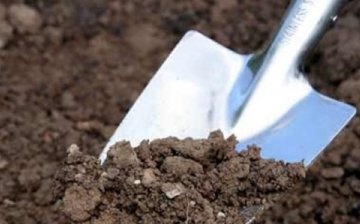
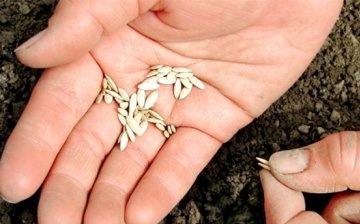
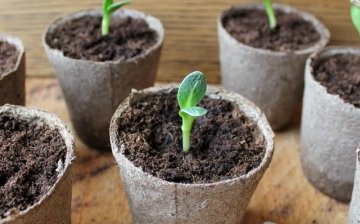
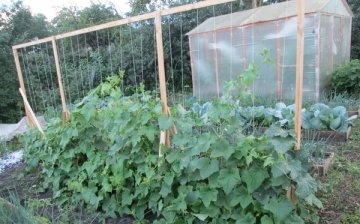
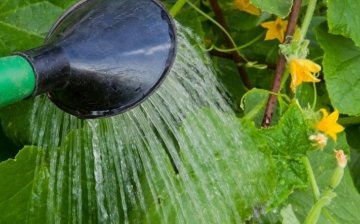
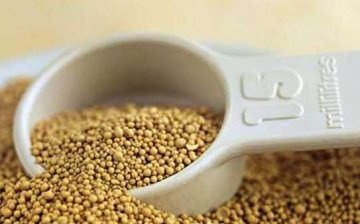
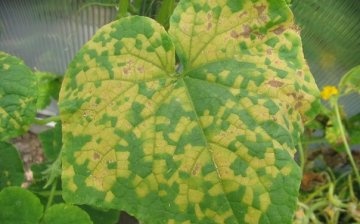
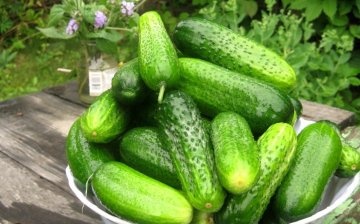










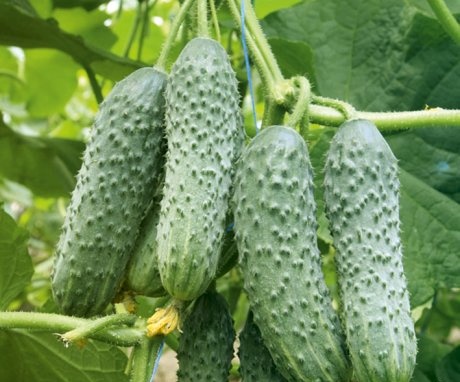
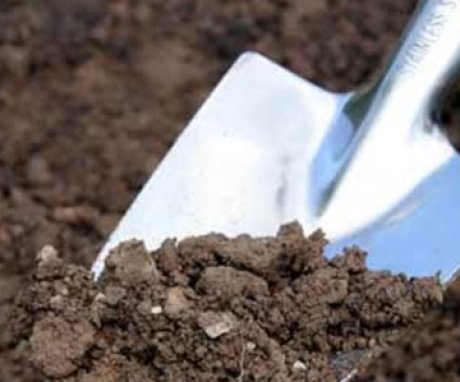
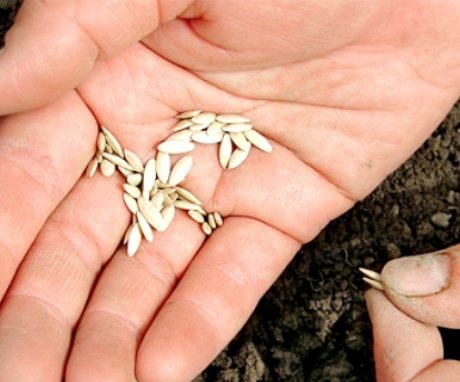
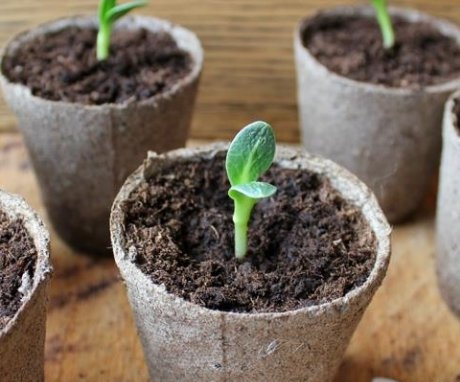
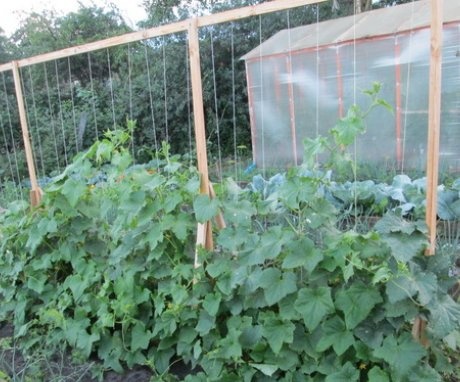
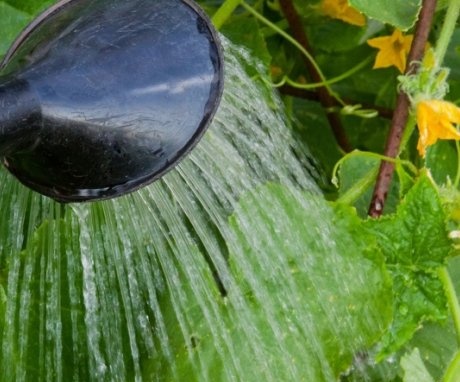
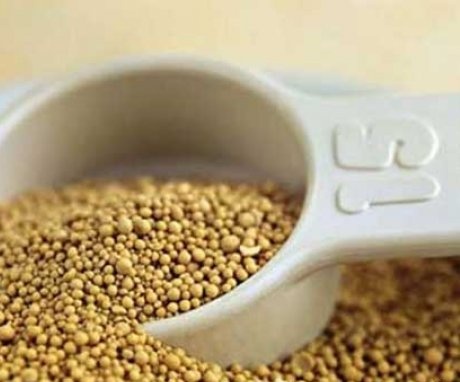
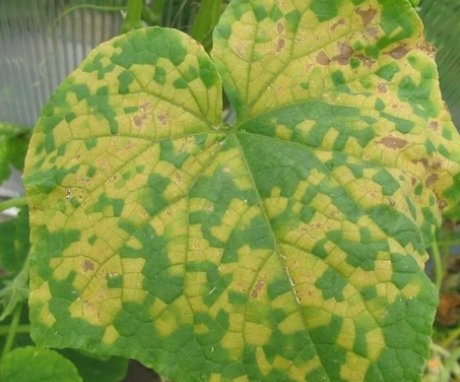
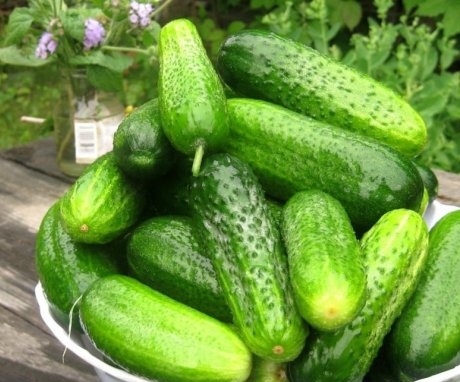
Cucumbers Kurazh have been planting for several years in my garden and I really like that they are not whimsical, but they bloom profusely and give a large harvest, and cucumbers of the correct shape have pimples and are excellent for conservation.
This year I planted this hybrid cucumber, did not grow seedlings, but planted the seeds that had hatched into the ground. The seedlings were friendly. He grew cucumbers on trellises, it is very convenient to take care of the plant and collect fruits with this method of cultivation. The harvest was slightly lower than written, but I'm happy.